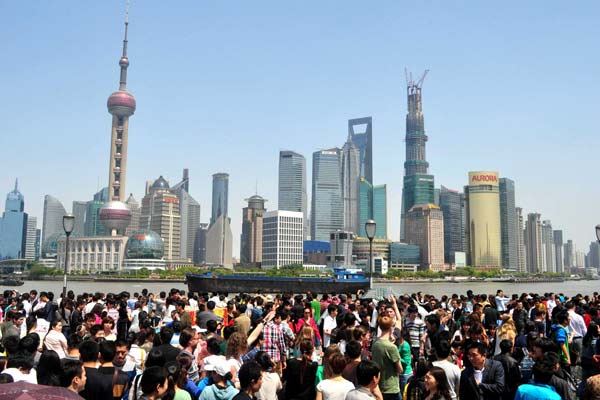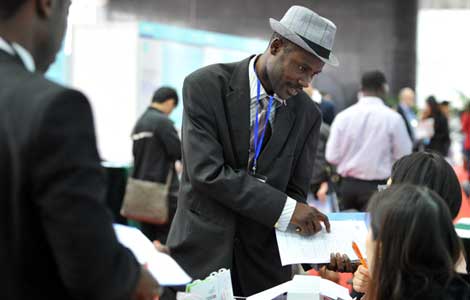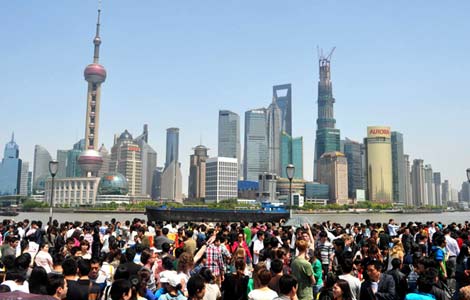Shanghai struggles with growth
Updated: 2013-07-11 02:41
By Zhou Wenting in Shanghai (China Daily)
|
||||||||
|
 |
|
Tourists converge on the Bund in Shanghai on May 1, International Labor Day.YAN DAMING / FOR China Daily |
Experts call for development of satellite towns to absorb new urban residents
Shanghai will face persistent population pressure in the coming years due to rapid urbanization in the city, with experts predicting the city's population will rise to around 30 million by 2030 — nearly the population of Canada at present.
To ease the situation, the city needs to further develop satellite towns and absorb more young migrant people to balance its aging population, experts said ahead of World Population Day, which falls on Thursday.
Shanghai's permanent resident population reached a record 23.8 million last year, according to the Shanghai Municipal Health and Family Planning Commission. This means that Shanghai boasts the largest population of any city in China, the most populous country in the world.
"By 2030, it's very possible the city will have 30 million people," said Zhou Haiwang, deputy director of the Institute of Population and Development under the Shanghai Academy of Social Sciences.
"Shanghai will face persistent population pressure due to rapid urbanization. The relatively high salaries in the city, compared with other parts of the country, also attract many migrants," he said.
Uneven distribution
According to experts, a major issue of concern is the uneven distribution of people across the city, with nearly 10 million people living in central areas. The population density in some central districts is more than 24,000 people per square kilometer, a figure far higher than other world-class cities, experts said. Meanwhile, the density on the outskirts of the city is very low, just one-sixth of that in central districts.
According to statistics from the Institute of Population and Development, there are around 2.7 million people in the downtown Huangpu district, which gives a population density of nearly 40,000 people per square kilometer, a figure that experts describe as a global rarity.
"I was sent overseas by my company for a year and I came back in February," said Tang Zhe, a resident of Huangpu district. "There are obviously more people and vehicles in the street than before. When I crossed the road at some big intersections, I felt I was completely overwhelmed in the crowd."
Ren Yuan, a professor from the School of Social Development and Public Policy at Fudan University, said that the suburbs should play a bigger role in the modernization of Shanghai.
"Promoting the construction of some key towns will significantly help Shanghai enhance urban functions and adjust its spatial structure," he said.
- Shanghai issues report on migrant population
- Shanghai gets go-ahead for free trade zone
- Shanghai gearing up to build international financial hub
- Shanghai center to aid regional growth
- Urbanization isn't just about the numbers
- Official calls for balance in urbanization process
- The challenges of urbanization
- Urban planners eye China's cities
Most Viewed
Editor's Picks

|

|

|

|

|

|
Today's Top News
Talks 'help build trust' between China, US
Obama pushes House Republicans on immigration
Chinese researcher pleads guilty in US drug case
US Navy completes 1st unmanned carrier landing
Premier delivers pledge on reforms
China, Russia vow regular exchanges
Program to help migrant workers find better jobs
Saving dogs brings hefty bill for rescuers
US Weekly

|

|















